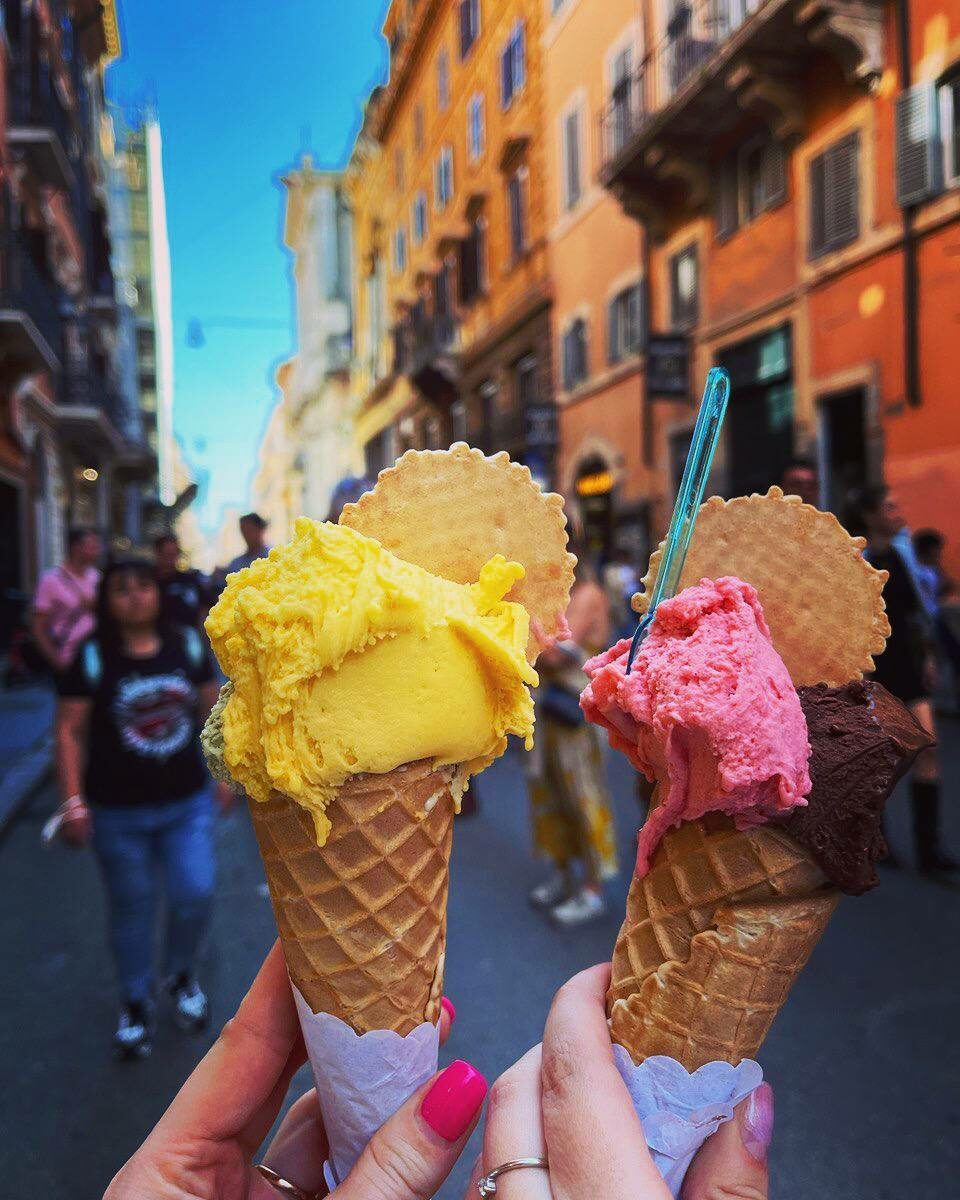
Italian philosophy of life in contrasts (p. 3): Ice-cream subtleties and life hacks
Roman ice-cream: subtleties and life hacks
A new day begins with a leisurely stroll through small neighborhoods, charming narrow streets reminiscent of life’s labyrinths. Before delving into the history of centuries-old architecture, there’s a desire to pause and eat something light, specific, and iconic in the Eternal City. The choice stops at ice cream!

The inception of ice cream, closely related to the modern Gelato, was laid by the royal court of the Medici family in the 14th century. A culinary competition was organized to prepare the most delicious dessert. The winner was a farmer named Rudger, who prepared a sweet dish from fruit juice, ice, and sugar. The dessert sparked a storm of positive emotions, thus glorifying Rudger and making him famous. He prepared his signature dish at the wedding of Catherine de’ Medici and Henry II.
Later, in the 16th century, the Medici family organized a celebration in honor of the King of Spain. The artist Bernardo Buontalenti, despite being primarily focused on architecture and fine arts, was tasked with organizing the event. He refined the original recipe and prepared a creamy dessert by adding milk, sugar, and eggs.
Over time, the recipe was perfected and conquered Europe thanks to the French-Italian chef with Sicilian roots, Francesco Procopio dei Coltelli. The first Gelateria (from the word “gelato” – ice cream; special establishments where ice cream is sold in Italy) opened in Paris and became incredibly popular. Similar establishments began to open in other European capitals over time. Technological breakthroughs made the ice cream preparation process faster and more convenient, and the dessert became widely available at a moderate price.
Italy, particularly Rome, is renowned for incredibly delicious gelato with a vast array of flavors. The craze for this dessert is high year-round, not just on hot days. There are numerous gelaterias in Rome, but how to choose the most natural, high-quality, and tasty one?

- “Gelato Artigianale”
A sign with this name indicates that the ice cream is homemade, directly in the gelateria, not produced elsewhere. - Mountains, shine, and bright colors in ice cream – signs of UNnaturalness
🍦Recently homemade ice cream from natural ingredients cannot be overly voluminous. It should be slightly above the container;
🍦Natural ice cream is always matte. Gloss is added by sweeteners and flavor substitutes;
🍦Bright colors and an excessively large variety of flavors in one Gelateria indicate chemical additives and batch production; - Ice cream takes a long time to melt
Natural ice cream is always sufficiently dense, without a large amount of air. It holds its shape for a long time and does not melt even in hot weather.
Italian ice cream is just one type of dessert that everyone who comes to this country should try. It is a part of culture, traditions, gastronomy, southern enjoyment, and the ability to love and pamper oneself.
Let’s go “from tourism to lifestyle”.









